REDISCOVERING THE MIDDLE EAST
IN THE BOOK OF JONAH
ASSAF MARRON
Pre-print. v1. 2009; v2. March 2024
(minor editorial updates)
INTRODUCTION
The book of Jonah is known to contain many themes that
appear in other cultures and mythologies. An excellent list of such
cross-cultural parallels appears in Gildas Hamel’s article “Taking the Argo to
JONAH AND ION/JAVAN
There is no question that Javan, or Yavan, grandson of Noah (Gen. 10:2-4),
is the Hebrew parallel of Ion3, the founder of Ionia, and the eponym
of large parts of Greek people, culture and geography. Although the Hebrew name
Yona and the Greek name Ion bear striking similarity, especially in Hebrew
transcription, I have not found discussion of parallels between the two.
The name similarity appears in several cultures. In the Indian language
Pali, the words "Yona"4 Yonaka5 and “Yavana”6 designate ancient Greek people. In Turkish and
other languages, Greece is called Yunanistan7, and in Arabic Greece
is called “[Al]-Yunan”8. These words are very similar to “Yunus”9,
the Arabic name for the prophet Jonah.
But, perhaps the most striking new connections between Jonah and Ion are
the following. First, Javan (who is already accepted as a parallel Ion) is the
son of Japheth (Noah’s son) and father of Tarshish (Gen. 10:2-4). In a
surprising parallel, the prophet Jonah makes his journey (Jonah 1:3) from the
city of Jaffa, which by tradition and mythology is called after Japheth10,
to the city of Tarshish. Thus, in both stories we see the protagonist serving
as a link or transition from Japheth to Tarshish. Second, the prophet Jonah is
son of a person called Amitai (Jonah 1:1). The Hebrew meaning of the father’s
name is either “Truth Speaker” or “God’s Truth.” The Greek Ion is the son of
Apollo3, who in addition to being the God of the Sun, is also the
God of Truth3. It is particularly interesting that this designation
of Apollo’s is mentioned specifically in connection with the story of Ion.
Hence we find parallels not only between the characters, but between their
fathers’ names, as well.
NINEVEH
The sea and sea-animals obviously play a key role in the book of Jonah.
A closer examination uncovers additional sea-related figures in the story. Let
us first analyze the name of the main city in the book,
DIVING BIRDS
As Hamel pointed out1, the name Jonah (in Hebrew Yona
– meaning “dove”) and its relation to doves is of great potential significance
in this story. One may ask, could the name or the bird itself carry additional
meanings beyond what we know of the bird today? Is there a reason why this
bird, the prophet, and the Greek nation carry such similar names? I propose
that the Hebrew word Yona, the Latin Columba, the English Dove, all words used
for the familiar pigeon, either highlight the sea-faring role of the dove, or
may even designate a different bird or different animal altogether that is much
more strongly associated with water than the dove we know today.
In ancient Greek Kolumbao means to plunge into water– to dive17.
According to Lewis and Short dictionary, the Latin word Columbus – a male
pigeon – is derived from the Greek word Kolumbus – a Diver18. Once this surprising connection is noticed, it
brings to mind the relation to the modern verb Dive which is well recognized in
the bird-name Dove, and is acknowledged in the word’s etymology19 . One
may dismiss this as a coincidence, except that in Hebrew, too, one kind of wild
pigeon is called Tzotzelet (Tzitzla or Tzultzela in
Aramaic).20 21 22 Though it
is generally accepted that this name likely comes from the word “sound”, another
meanings of the root TZ-L-L is to dive. Is this only a linguistic coincidence,
or is it that the sea-going prophet who was closely acquainted with the great
depths of the ocean, is named after a water dwelling, diving fowl? And could
the dove mentioned in the story of Noah be that same kind of bird? Could the
name of the Greek nation, which is surrounded by water and is comprised of many
islands, and the name of this waterfowl come from the same root, denoting water
and depths?
To further strengthen this possible connection between water and Yona
the bird, Jonah the prophet, Yavan, and Ion, I propose looking at the large
number of words the main vowel of which is “o” or “u” and main consonant is “n”
(and possibly also have the consonant “v” which is interchangeable with the
vowel “o”) which are strongly tied to water and seas, among them the Hebrew
Yaven (the mud at the depth of the sea), Nun (fish), Onia (Ship), and Noah
(first person to be associated with a vessel in the Bible), the Indo European
root Nau (ship), and the Greek Okeanos ( Ocean, “fast flow”, the mythological
river surrounding the world). All these words are reminiscent of Yona, Yavan
and Ion.
AN INDIAN CONNECTION
Gordon’s exegesis points out similarity between parts of the story
of Mittavindaka23 in the Buddhist Jakata Tales, and parts of the
story of Jonah. Like Jonah, Mittavindaka sailed on a ship that met with great
obstacles, was picked by lots to be removed from the boat, and was cast
overboard fastened to a raft. The ship was then able to sail again. Gordon does not point out, though, the
similarity in the names. As the name Mitta24 is a proper name in
Pali, the name Mittavindaka can be parsed “Mitta-Vindaka”. With the
interchangeability of “v” and “o” as pointed above, could the name be
interpreted as “Mitta-Yonaka”, which suggests a relation to “Yona [son of]
Amitai”?
THE KIKAYON
Hamel challenges the traditional interpretation and translation of the
word Kikayon (Jonah. 4:6) as a fast growing gourd or ricin plant. Quoting Hamel’s
words that “the Kikayon of the book of Jonah may have lost its original
meaning”, I will examine several additional candidates for alternative meanings.
The reader should be aware, though, that this section is more of a proposed
hypothesis than substantiated findings.
The Bible says that the great benefit that the kikayon afforded
Jonah was shade and protection from the heat of the sun. However, Jonah had
already built himself a booth specifically for having sufficient shade (Jonah
4:5). Hence, perhaps the “great happiness” that the kikayon has brought
Jonah, was not due to protection from the sun, but due to something else. I
propose that perhaps the kikayon was a flower – either a crocus or a
cyclamen, and that the happiness it brought is associated either with its beauty,
with something it symbolizes, with the plants medicinal powers, or perhaps more
simply with its being a powerful manifestation of nature.
Aside from certain phonetic orthographic similarities between the word
Kikayon and crocus – krokos – κρόκος,25 26 and cyclamen – κυκλάμινο,27
it is not farfetched that the appearance of a beautiful flower would bring
happiness to a person, and especially, to one as depressed a Jonah. As the
Crocus was also associated with Greek royalty, could Jonah’s / Ion’s joy come
also from this reminder of his far away home?
Associating the kikayon with cyclamen may be supported also by
this flower’s particular sensitivity to mites,28 which parallels the
kikayon’s destruction by a worm. Additionally, as suggested by Hamel,
perhaps the plant that saved Jonah is used for medicinal purposes. According to
Pedanius Dioscorides,29, 30, 31, 32 the cyclamen has many
medicinal powers, including some which could be very appropriate for Jonah,
such as protection against sunburn, protection against serpent bites, and
purging (also suggested by Hamel).
Lastly we should remember that Ion’s name is already associated with a
flower – the violet33. Aristophanes referred to
A GLIMPSE INTO IRELAND AND SCOTLAND
The Irish abbot St. Columba, established
an abbey on the Iona island in the Hebrides . The origin of the two names is subject to debate, and they may
be Latinization of names in local languages, but the correlation of prophet
coming from the sea, to convert local people, and being associated with these
names is intriguing35.
SUMMARY
We
have seen above a significant list of possible links between the book of Jonah
and topics in Assyrian, Hebrew and Greek traditions. While such cultural
crossovers are well known, these new links are not only interesting as further
proofs for such connections, but they may suggest new interpretations and
insights into well known biblical themes.
INTERIM NOTES and REFERENCES
(To be updated and enhanced with fresh web links and direct references to
original sources).
1. Hamel, Gildas Taking the Argo to
2. Gordon, S.L. Exegesis and Comments on the
Bible, Book of Jonah, Massada Publishers,
Tel Aviv, 1952 .
3.
4.
WIkipedia Yona (Pali word) https://en.wikipedia.org/wiki/Yona
5. Malalasekera, G.P., “Dictionary of Pali Proper Names”. 1937,
Motilal Banarsidass publishers, 2006. http://www.palikanon.com/english/pali_names/y/yonaa.htm
6.
Encyclopedia Britannica, Yona Pali.
7. English-Turkish dictionary, Ectaco Corp. 2006, http://www.ectaco.co.uk/English-Turkish-Dictionary
8. Hebrew Arabic Dictionary – for Spoken Arabic in
9. Qu’ran Chapter on Nabi Yunus http://www.sacred-texts.com/isl/htq/index.htm
10.Wikipedia, Jaffa. And references therein. See also https://www.jewishvirtuallibrary.org/jaffa
13. See Aramaic dictionary http://cal1.cn.huc.edu/cgi-bin/test1.cgi
14. See Hebrew English Dictionary online: http://www.milon.co.il/dictionary/english-to-hebrew.php?term=%D7%A0%D7%95%D7%95%D7%94
15. Encyclopedia Mikrait
(Biblical Encyclopedia), Bialik
Institute, Moshe David Kassuto, Editor. 1968, Vol 5, p. 831;
17.http://www.htmlbible.com/sacrednamebiblecom/kjvstrongs/STRGRK28.htm
18.http://www.perseus.tufts.edu/cgi-bin/ptext?layout.reflang=la;layout.reflookup=Columbus;doc=Perseus%3Atext%3A1999.04.0059%3Aentry%3D%239194
19. See Dictionary.com Entry for Dove http://dictionary.reference.com/browse/dove
20. Babylonian
Talmud, Tractate Bava Batra 75a
21. Babylonian Talmud, Tractate
Sanhedrin 100a.
22. Even-Shoshan Hebrew Dictionary, Entry Tzotzelet.
23.http://www.palikanon.com/english/pali_names/l/losaka_jat_041.htm
24.http://www.palikanon.com/english/pali_names/me_mu/mitta.htm
25.http://www.uni-graz.at/~katzer/engl/Croc_sat.html
26.Shttp://concise.britannica.com/ebc/article-9361906/crocus
27.http://www.websters-online-dictionary.org/definition/cyclamen
28.http://www.uky.edu/Ag/Entomology/entfacts/trees/ef422.htm
29.http://www.bnnonline.it/biblvir/dioscoride/pages/72_XLVII.htm
30.http://israel1234.wordpress.com/2006/09/11/cyclamen-1/
31.http://www.healthsystem.virginia.edu/internet/library/historical/rare_books/herbalism/vienna.cfm
32.http://www.cyclamen.org/medicine_set.html
33.See Webster dictionary http://www.m-w.com/cgi-bin/netdict?iodine
34.Aristofanes, Equites, 1323
and 1329; and Acharnians, 637. Confirm on-line at http://www.infoplease.com/dictionary/brewers/city-violet-crown.html
35. Wikipedia https://en.wikipedia.org/wiki/Columba
Assaf Marron is a researcher in computer science at the Weizmann Institute of
Science in Israel. His areas of interest include software engineering,
languages, and models of natural and artificial complex systems. He earned his
Ph.D. degree in Computer Science from the University of Houston, and studied
history and philosophy of science as well as linguistics at Tel Aviv University.






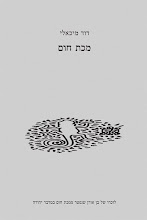

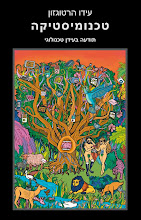
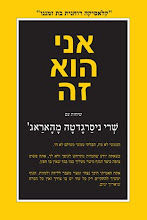
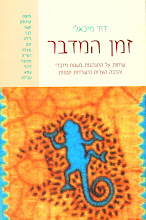
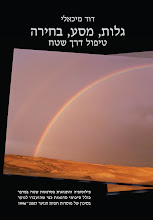
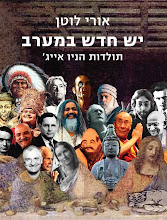
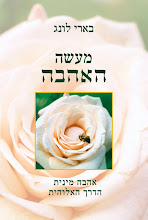



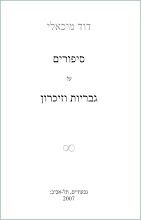
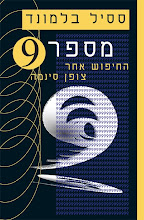



אין תגובות:
הוסף רשומת תגובה